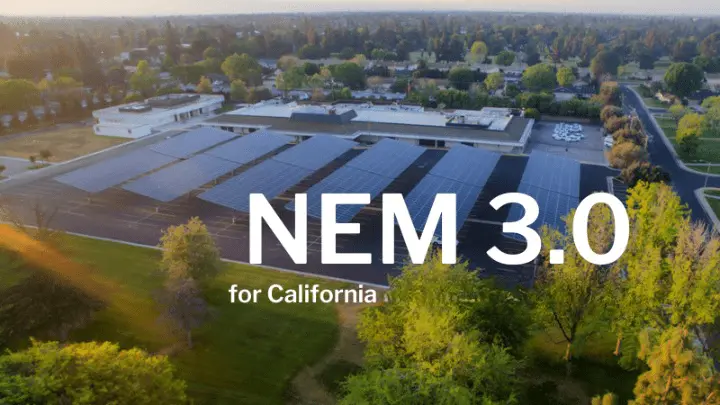California NEM 3.0 vs. NEM 2.0
The California Public Utilities Commission (CPUC) recently approved a new net metering (NEM) tariff, known as NEM 3.0. NEM 3.0 is a significant change from the previous NEM 2.0 tariff, and it will have a major impact on solar customers in California. Introduction of NEM 3.0 will have an impact on homeowners planning to go solar by reducing the value of solar credits by as high as 75% with utilities like PG&E, SDG&E and SCE.
What is NEM?
NEM is a mechanism that allows homeowners with rooftop solar installations to receive credit for the excess electricity they generate and send back to the grid. These credits can then be utilized during periods of low or no solar generation. In many states the value of these credits is equal to the retail electricity rate.
What is NEM 3.0?
NEM 3.0 is a new billing system that replaced NEM 2.0 on April 14, 2023. Under NEM 3.0, solar customers will receive a lower credit for the excess electricity they export to the grid compared to NEM 2.0. The value of the amount of the credit that the solar customers receive will vary depending on a variety of factors like time and day of the week export and month of export.
Reason for change from NEM 2.0 to NEM 3.0
Under NEM 2.0, non-solar customers were essentially subsidizing solar customers. NEM 3.0 will spread the costs of maintaining the grid more evenly across all customers.
Secondly, under NEM 2.0, solar customers could export their excess electricity to the grid at any time of day and receive a full retail credit. Since the solar setup is primarily generated during off-peak hours, the grid operators had to purchase the power at retail tariff while the actual value of electricity is lower.
Impact of transition from NEM 2.0 to NEM 3.0 on Homeowners
The impact of NEM 2.0 to NEM 3.0 on homeowners will vary depending on the size of their solar system and their usage patterns. Homeowners with small solar systems and low usage during off-peak hours will likely see the biggest impact. These homeowners will receive lower credits for the excess electricity they export to the grid. Homeowners will also have to transition to a time of use rate plan to participate under NEM 3.0 where the electricity prices are very high during peak hours.
Advantage of Combining Solar with Storage
One way to mitigate the impact of NEM 3.0 is to combine solar with storage. Solar with storage allows homeowners to store excess electricity generated during the day (off-peak hours) for use at night (peak-hours) while the electricity prices are high. This can help homeowners reduce their reliance on the grid and also save money on their electricity bills. Talk to our energy advisors to learn more about how you can still benefit from turning to solar. You can reach us at 510-737-6228 or email us at info@nabuenergy.com.
